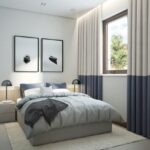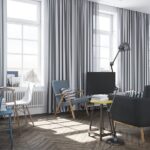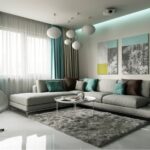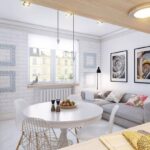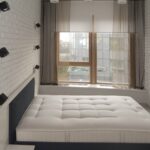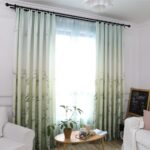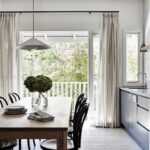Characteristics of Scandinavian-style curtains
The Scandinavian style is simple and concise. Its main color is white, it is intended to make the space brighter and more sunny. Curtains in such an interior must be selected taking into account these features.

Types of curtains used in the Scandinavian style
The homeland of the Scandinavian style is northern Europe, this region is characterized by long winters and a lack of sun. To visually solve these problems in rooms, this approach to the design of the space was invented. Light-colored walls, floors and furniture create a neutral backdrop and reflect sunlight well throughout the room.
Choosing a Scandinavian interior for an apartment, you need to look for curtains, guided by several principles:
- they must transmit light well;
- be light;
- do not burden the interior;
- do not be too bright.

Dense and multi-layered curtains, complex structures on the windows look ridiculous in such an interior, so it is better to abandon them in favor of simpler options.
Curtains
In the Scandinavian style, preference is given to translucent fabrics that allow light and air to pass through, look airy and do not attract undue attention. Curtains do not meet these requirements, but solutions can be found. Choose softer fabrics that drape easily. The folds in the canvas visually soften the curtains, making the room more comfortable.

Scandinavian style involves the use of one layer of fabric on the window. Tulle is usually not hung, because of this, more light penetrates into the room and a sense of continuity from nature outside the window is created.
Blinds
This is another good option for a Scandinavian interior. In northern European countries, they are often built into the window between the panes, so they do not take up space inside the room. When open, they let in a lot of light, and if necessary, they are easy to close.
Blinds look very minimalistic, suitable for lovers of modern interiors. If desired, you can beat them by adding romantic curtains to the window. Modern blinds can be:
- horizontal;
- vertical.
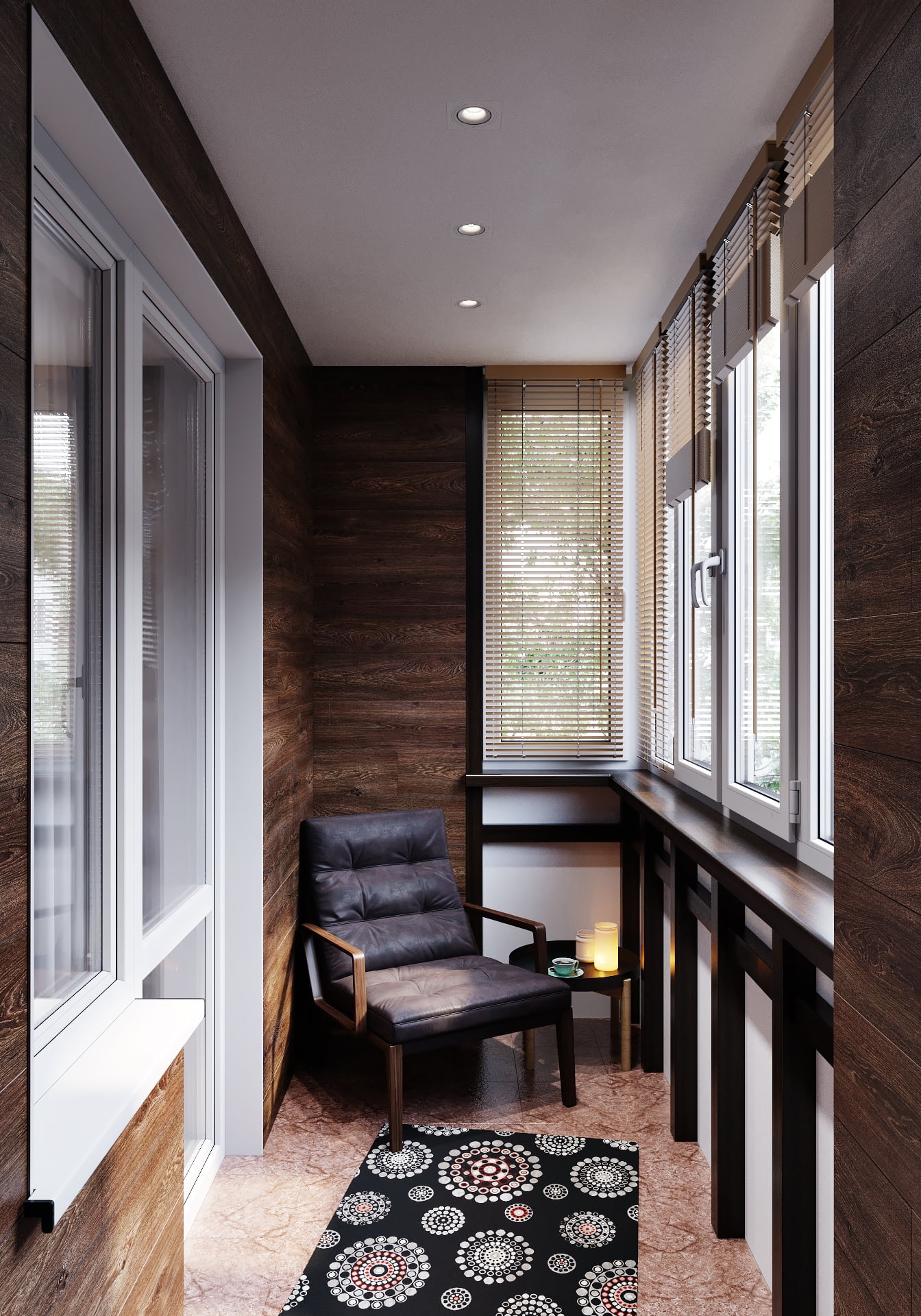
The second option is more often used in offices, but if desired, they can also be hung in a residential area.
The following materials are used in the manufacture of blinds:
- plastic;
- aluminum;
- the cloth;
- wood.

The latter option is suitable for rooms decorated in a Scandinavian style. This material will be combined with other decorative elements.
Roman curtains
Roman blinds can be successfully integrated into any interior. In the Scandinavian style, we use options from light natural fabrics. This version of the curtain is more sophisticated than the blinds. When raised, they are beautifully assembled into an accordion, without blocking the sunlight from the window, and, if necessary, completely cover it.
Thanks to a special lifting mechanism, such window textiles are easy to use and maintain.The sewn-in strips can be easily removed before washing the fabric and put back in place after drying. Roman blinds can also be combined with a second one in the form of tulle or curtains.

Swedish curtains work in a similar way. A roll of fabric in this type of curtain is located at the bottom, it is weighted with a special rail, this structure is lifted and held by two cords.
This variant came from Sweden, as the name suggests. In this country there is a tradition of leaving windows uncurtained, but the craving for comfort forced its inhabitants to come up with this version of curtains.
Roller blinds
Roller blinds are a simple solution for a Scandinavian-style room. When assembled, they are almost invisible on the window, and when closed, they protect from prying eyes.
The roller blind mechanism is quite simple. The cloth of fabric is rolled up and put on a bar of their metal, a lifting mechanism with a chain is attached to the side.
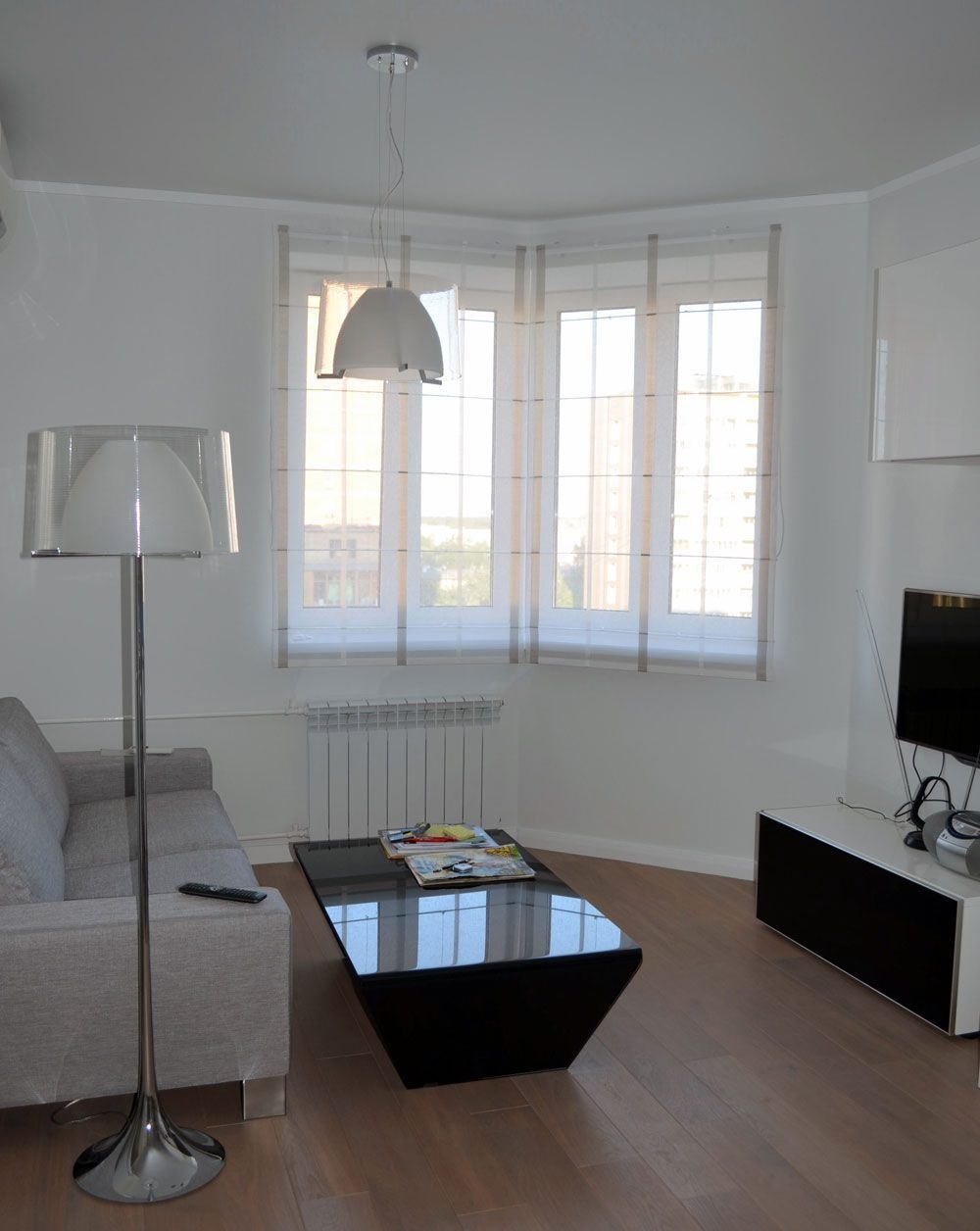
Such curtains can be bought ready-made or sewn to order, choosing a unique design for the interior of the room. In addition to these, you can use lightweight fabric on the sides of the window. But by themselves, Roman blinds look appropriate, especially in modern interiors.
What material to choose for curtains
Scandinavian style tends towards naturalness and simplicity, therefore, preference should be given to natural fabrics. They let the sun's rays and air pass well, are easy to clean, and such materials look very stylish in the interior. When sewing curtains, we give preference to natural fabrics:
- linen;
- silk;
- cotton;
- muslin;
- chintz.
Important! Keep in mind that natural fabrics wrinkle easily and may shrink during washing.
The color scheme in the Scandinavian style is limited to light shades. Depending on the degree of light in the room, you can choose warm or cold colors. The main thing is that the color of the window textiles is combined with the rest of the decor elements. The following combination options look good in interiors:
- Curtain + furniture.
- Curtain + walls.
- Curtain + decorative elements.
Important! Make sure that the textiles on the window do not blend in with the color of the walls. If similar shades are used, then they should differ from each other by one or two shades.
A Scandinavian-style room does not have to look like a hospital room; you can add bright spots for this. For example, highlight a sofa and curtains against a neutral background of walls and ceilings. Or curtains and carpet, paintings, etc.
Interior design examples
Before you start choosing curtains for your Scandinavian interior, you can get ideas and inspiration from the photo. Only a look can help create an individual design of the room, where everything will look appropriate and harmonious.
Kitchen
When choosing curtains for the kitchen, do not forget that it should be not only beautiful, but also comfortable. An excellent option for such a room is a shortened curtain. It can be a version divided in the middle or a solid canvas, collected on one side with a pick-up.
For the kitchen, roller and roman blinds of light shades from natural fabrics are also suitable. It is better if they are as transparent as possible.
Using lifting curtains in the kitchen saves space at the window. This solution is especially true for small spaces.
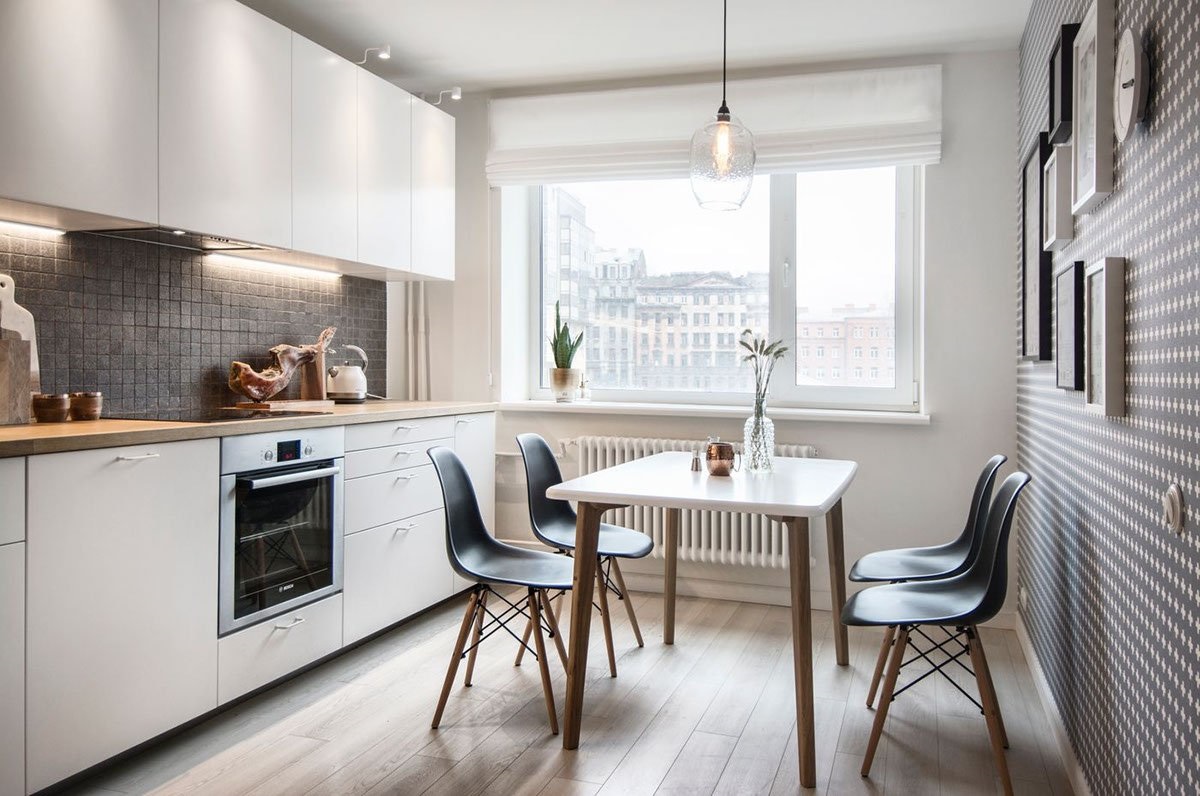
Living room
For living rooms, all the same rules apply: naturalness, lightness, restraint. Here, the use of darker shades is allowed, especially if the area of the room allows.

Curtains made of soft material will look advantageous here. They can be hung as a single layer or combined with sheer tulle.
The use of unobtrusive prints is allowed.Geometric and motives are especially relevant for the Scandinavian style.
Bedroom
The bedroom is a resting place. Curtains for this room should be chosen the most laconic and simple.

The ideal option for such a room is Roman or roller blinds with a blackout effect. You can beat them by decorating with an additional layer of light tulle.
Children
The fabric, which does not transmit light, is also good for the nursery. It will provide your child with a healthy and sound sleep.

For a more decorative effect, we use such a curtain complete with a transparent curtain in a light shade.
Balcony
It is preferable to leave the balcony without window textiles, since it itself tends to reduce the amount of light in the apartment. If you curtain it with curtains, then the room with a balcony will be very dark.
However, if there is still a need for curtains, then it is worth choosing transparent fabrics in light shades. It can be as pure white as there are cream tones.

On the balcony, Swedish curtains or their Roman and roller counterparts look good.
If space permits, then classic tulle can be hung on the balcony. It will look very romantic and decorative.
Features of the curtain rod for such curtains
It is better to choose wooden or iron curtain rods in the Scandinavian style. It can be:
- round cornices;
- tire.
The last option will look more concise. It can be easily hidden, which makes the decoration of the room much easier, because you do not need to try to combine it with the rest of the decor elements.

The round cornice is not covered with a curtain and has an additional decorative function. They can vary in rod length and diameter.
How to fix it correctly
Depending on the method of fastening, the cornices are:
- wall-mounted;
- ceiling.

The length of the wall cornice should be 30-50 cm longer than the width of the window. Before installing the eaves, you need to make sure that it is 10-15 cm away from the wall; an indent of 5 cm must be left between it and the upper part of the window so that the sashes can be easily opened. Fixed curtains must not touch the radiator or window handle.
Required tools:
- building level;
- pencil;
- ruler;
- brackets;
- dowels and screws.
To fix the curtain rod to the wall, you will need to do the following steps:
- Using a pencil, a ruler and a level, draw a line on the wall at the height of the cornice installation.
- We mark the places for the brackets. The distance between the window, left and right mounts must be the same.
- Using dowels and self-tapping screws, we fix the brackets and cornice.

To install the ceiling cornice, we perform similar actions, but the location is marked on the ceiling.
How to hang curtains on a cornice
There are several types of fasteners for curtains. It can be:
- rings;
- eyelets;
- clamps;
- strings;
- loops;
- hooks.
Rings, clips and eyelets as well as textile hinges and ties are suitable for round wall curtain rods. They perform an additional decorative function, so the selection must be treated carefully. Even such an insignificant detail, which does not fit into the overall style of the room, can spoil the impression of the interior.

The hooks are suitable for busbar curtain rods. To attach them to the curtains, a special tape with loops is sewn. The web with the hooks fixed is then threaded into the grooves of the cornice.
This version of the hidden mount looks very laconic and does not attract attention. But removing and hanging curtains with hooks after washing can be very difficult.
Scandinavian style is spacious and bright spaces where light plays an important role. If necessary, the room can be played up with different types of lighting, but the main role remains with the sun. For this reason, it is better to choose transparent and light curtains for such an interior.

In the daytime, curtains play an exclusively decorative role. They can be raised, in the case of roller and roman, or moved apart, if they are classic curtains or tulle. Natural fabrics of light shades are welcome; with a neutral base, darker tones and ornaments can be used. Curtains will help make the interior of the room complete and individual.
Video: Scandinavian-style curtains
